In recent years, the air fryer market has seen a surge in popularity, driven by consumer demand for healthier cooking options and the convenience it offers. As this trend continues to grow, understanding the intricacies of the low minimum order quantity (MOQ) landscape in air fryer manufacturing becomes increasingly important. This brief overview explores the dynamic interplay between technology, market trends, and the opportunities and challenges faced by manufacturers in this thriving sector.
The Rise of Air Fryers in the Western Markets
The Western markets have witnessed a remarkable surge in the popularity of air fryers, transforming the landscape of kitchen appliances. Once a niche product, air fryers have now become a staple in many households, offering a healthier alternative to traditional frying methods. This shift can be attributed to several key factors that have propelled the growth of air fryers in the Western markets.
One of the primary reasons for the rise of air fryers is the growing health consciousness among consumers. With the increasing awareness of the health risks associated with deep-frying, people are seeking out cooking methods that allow them to enjoy their favorite fried foods with fewer calories and less oil. Air fryers provide a solution that promises crispy, golden-brown results with a fraction of the fat, making them an attractive option for health-conscious consumers.
Moreover, the convenience factor cannot be overlooked. Air fryers are compact, easy to use, and require minimal cleanup. Their ability to cook a variety of foods, from vegetables to meats, in a single appliance has made them a versatile addition to any kitchen. The convenience of having a device that can perform multiple tasks without the need for additional cookware has resonated with busy families and individuals who value efficiency.
The technological advancements in air fryer design have also played a significant role in their popularity. Modern air fryers come with features like adjustable temperature controls, timers, and even preset cooking programs that cater to different types of food. These innovations have made air fryers more user-friendly and adaptable to a wide range of recipes, from classic French fries to gourmet dishes.
Another factor contributing to the rise of air fryers is the influence of social media and celebrity chefs. Influencers and chefs have been showcasing the versatility and health benefits of air fryers in their content, which has helped to educate consumers and generate buzz around the product. The “clean eating” movement has also played a part, with air fryers being seen as a tool for achieving healthier eating habits without sacrificing taste.
The competitive pricing of air fryers has also made them accessible to a broader audience. As the technology has matured, the cost of manufacturing has decreased, allowing manufacturers to offer air fryers at more affordable price points. This has made the product more attainable for budget-conscious consumers who are looking for a healthier cooking option without breaking the bank.
Additionally, the sustainability movement has influenced consumer purchasing decisions. Air fryers consume less energy than traditional ovens and deep fryers, making them a more eco-friendly choice. As people become more environmentally conscious, the appeal of energy-efficient appliances like air fryers has grown.
The rise of online shopping has also had a significant impact on the air fryer market. With the convenience of ordering from the comfort of one’s home, consumers can easily research and purchase air fryers, often at competitive prices. Online marketplaces have become a key channel for manufacturers to reach customers and showcase their products.
In conclusion, the rise of air fryers in the Western markets is a multifaceted phenomenon driven by health concerns, convenience, technological advancements, and changing consumer values. As the market continues to evolve, it’s likely that air fryers will become even more integrated into the everyday cooking routines of Western households.
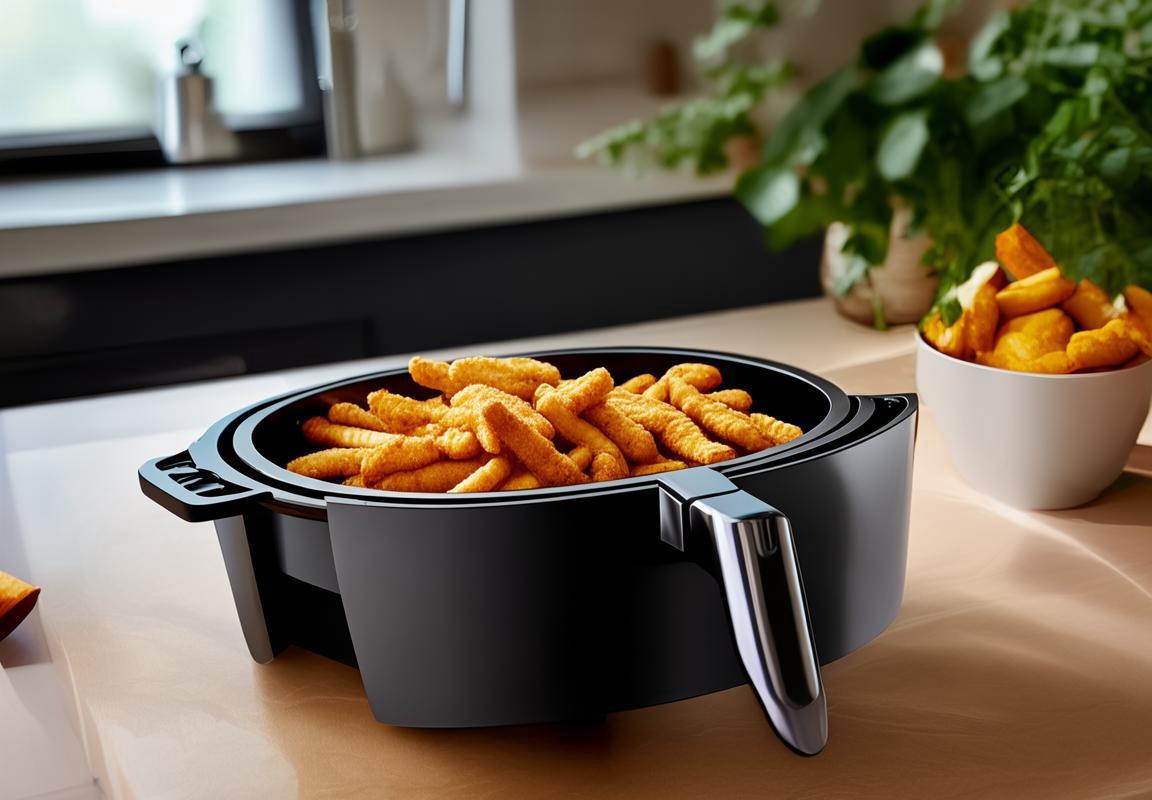
Understanding Low MOQ in Air Fryer Manufacturing
In the ever-evolving world of kitchen appliances, the concept of low minimum order quantity (MOQ) has become increasingly significant, especially in the air fryer market. This trend has opened up new opportunities for manufacturers and distributors, allowing them to tap into smaller, niche markets or introduce new products with minimal risk. Let’s delve into what low MOQ means in the context of air fryer manufacturing.
Low MOQ refers to the minimum number of units a customer needs to purchase from a manufacturer to initiate a production run. Historically, this number has been quite high, often requiring bulk orders that could be daunting for small businesses or startups. However, with advancements in manufacturing processes and global supply chains, manufacturers have started offering lower MOQs, making it more accessible for a wider range of buyers.
One of the primary benefits of low MOQs is the reduced financial risk for customers. Traditionally, buying in bulk meant committing to a large investment upfront, which could be risky if the product didn’t meet market expectations. With a low MOQ, businesses can test the waters with a smaller order, ensuring that the product aligns with customer demands before scaling up production.
In the air fryer market, which has seen a surge in popularity due to health and convenience trends, low MOQs have become a game-changer. It allows entrepreneurs and retailers to introduce new models or limited-edition designs to their market without the burden of a substantial financial outlay. This flexibility is crucial for staying competitive and responsive to the dynamic consumer landscape.
Manufacturers who offer low MOQs in air fryer manufacturing are typically equipped with agile production capabilities. They can quickly adapt to changes in demand and can often produce custom air fryers with specific features or branding, catering to the unique needs of individual clients. This customization potential is a significant draw for businesses looking to differentiate themselves in a crowded market.
The transition to low MOQs in air fryer manufacturing has also been facilitated by advancements in technology. Automated production lines and just-in-time (JIT) inventory management systems have streamlined operations, allowing manufacturers to produce smaller batches with greater efficiency. This efficiency translates to lower costs, which can be passed on to the customer in the form of competitive pricing.
Another aspect of low MOQs in air fryer manufacturing is the emphasis on quality control. With smaller production runs, manufacturers can implement stricter quality checks and make adjustments more rapidly if a defect is detected. This ensures that the final product meets high standards, which is particularly important in the appliance industry where customer satisfaction is paramount.
Moreover, low MOQs encourage collaboration between manufacturers and buyers. This relationship can lead to co-developed products that are tailored to specific market segments or customer preferences. Such collaborative efforts can drive innovation and can result in a product that stands out in a saturated market.
It’s worth noting that while low MOQs offer flexibility and reduced risk, they don’t necessarily equate to the lowest prices. Manufacturers who provide low MOQs may have to charge a premium due to the increased administrative costs associated with handling smaller orders. However, the long-term benefits of being able to enter the market with a smaller initial investment often outweigh the initial higher costs.
Furthermore, the rise of online marketplaces has made it easier for manufacturers to reach buyers with low MOQs. These platforms allow manufacturers to showcase their products to a global audience and provide a straightforward purchasing process, which simplifies the logistics of managing multiple, smaller orders.
In conclusion, the concept of low MOQs in air fryer manufacturing has reshaped the industry, offering benefits such as reduced financial risk, increased customization, and better quality control. As technology continues to evolve and global supply chains become more efficient, we can expect to see more manufacturers offering this option, further democratizing access to the air fryer market.
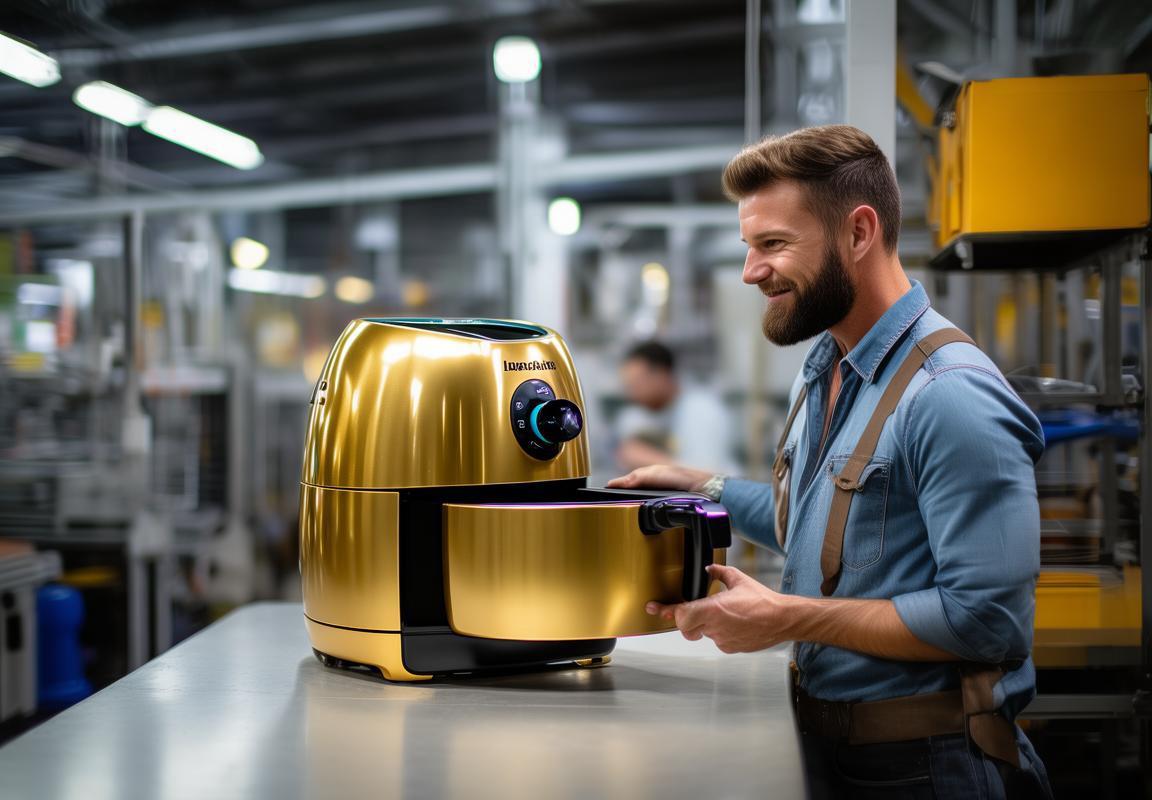
Key Players in the Low MOQ Air Fryer Market
In the realm of low minimum order quantity (MOQ) air fryer manufacturing, several key players have emerged as leaders in the market. These companies, with their innovative designs and strategic partnerships, have carved out a niche for themselves in the competitive landscape. Here’s a closer look at some of the prominent figures shaping the low MOQ air fryer market:
-
Gourmia: Known for their user-friendly appliances, Gourmia has made a name for itself by offering a range of air fryers with low MOQs. Their commitment to quality and affordability has attracted both small-scale retailers and e-commerce platforms.
-
T-fal: As a well-established brand in kitchen appliances, T-fal has leveraged its reputation to enter the low MOQ air fryer market. With a focus on durable and efficient products, T-fal’s air fryers are a favorite among consumers looking for a healthier alternative to traditional frying.
-
AICOK: This brand has gained significant traction with its eco-friendly and low MOQ air fryers. AICOK’s commitment to sustainability is reflected in their use of energy-efficient technologies, making them a go-to for environmentally conscious consumers.
-
Cosori: A newer entrant in the market, Cosori has quickly gained popularity due to its sleek designs and advanced features. Their air fryers, offered with low MOQs, cater to tech-savvy consumers who appreciate modern kitchen gadgets.
-
Secura: With a focus on safety and convenience, Secura’s air fryers have become a staple in the low MOQ market. Their range of products includes air fryers with various capabilities, from multi-functional units to compact models suitable for small kitchens.
-
Philips: The Philips brand is synonymous with innovation, and they’ve extended this to the air fryer market with their low MOQ offerings. Known for their quality and reliability, Philips air fryers are a testament to the brand’s continued dedication to excellence.
-
Power Air Fryer: This brand has made a splash with its compact and portable air fryers, which are perfect for those with limited space. Their low MOQs make it easy for small businesses to stock up on these trendy appliances.
-
Cuisinart: As a household name in kitchen appliances, Cuisinart has expanded its portfolio to include low MOQ air fryers. Their reputation for durability and versatility ensures that their products are a hit with both home cooks and commercial users.
-
GoWise: GoWise has positioned itself as a leader in the low MOQ air fryer market with its wide range of models, each designed to cater to different consumer needs. Their commitment to providing value for money has won them a loyal customer base.
-
Kabob Queen: This brand has a unique selling point with its air fryers that are specifically designed for Middle Eastern and Mediterranean cuisine. Their low MOQs make it accessible for importers and retailers looking to diversify their product offerings.
These key players in the low MOQ air fryer market have managed to carve out their own niches by focusing on different aspects of the market, from affordability and eco-friendliness to technological innovation and cultural specificity. Their strategies, combined with the growing consumer interest in healthier cooking methods, have propelled the low MOQ air fryer market to new heights.
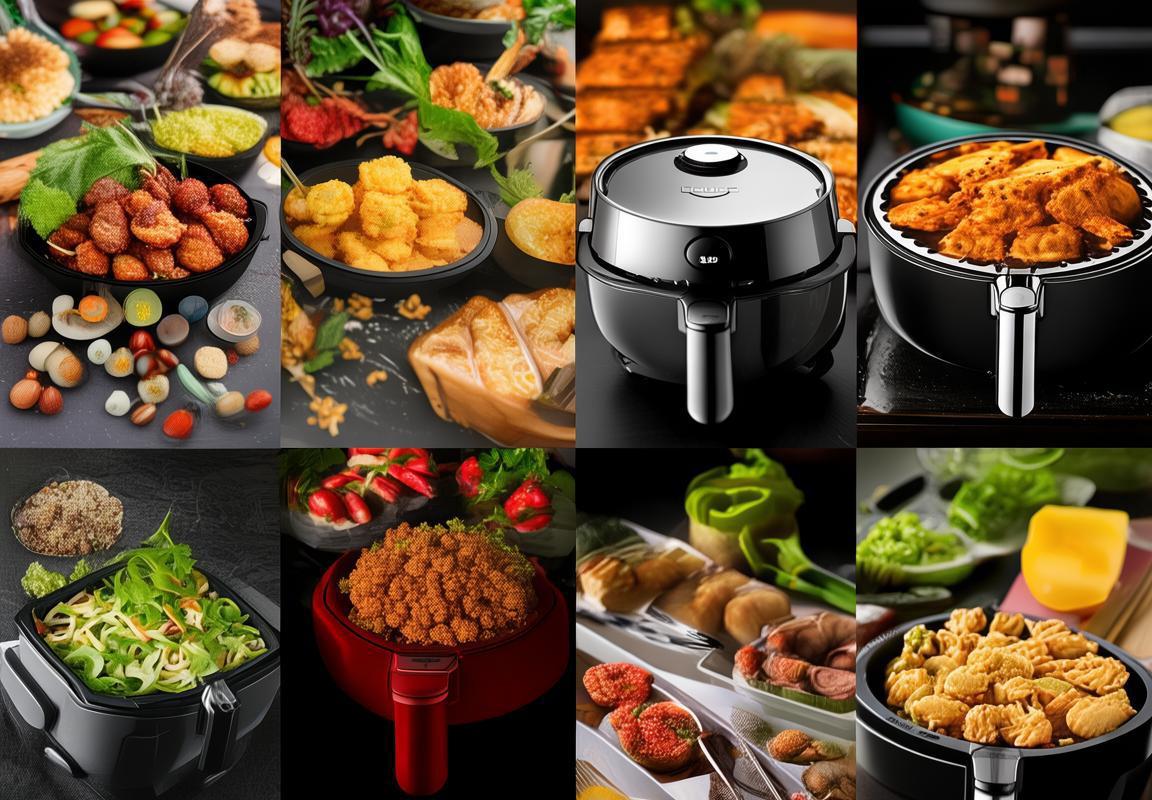
Benefits of Low MOQ for Retailers and Distributors
In the competitive landscape of retail and distribution, the concept of a low minimum order quantity (MOQ) for air fryer manufacturers has emerged as a game-changer. This approach offers several tangible benefits that can significantly impact the operations and profitability of retailers and distributors alike.
The flexibility to test new products is one of the most attractive aspects of a low MOQ. Retailers can now introduce a variety of air fryers to their shelves without the fear of being tied down by a high volume of inventory. This allows them to gauge customer interest and sales potential before committing to larger orders, reducing the risk of stockpiling unsold items.
By offering a low MOQ, manufacturers enable retailers to maintain a diverse inventory. This diversity can cater to a broader range of consumer preferences and seasonal demands. Distributors benefit from the ability to stock a wider array of products, ensuring they can meet the needs of different retailers and end-users without the burden of excess stock.
A low MOQ can also open doors for smaller retailers who might not have the capital to invest in large batches of products. These businesses can now afford to offer the latest air fryer models to their customers, which can be a significant draw in a market saturated with generic appliances.
Reducing the financial barrier to entry is a crucial advantage. Retailers and distributors with limited capital can still participate in the air fryer market, expanding their offerings and potentially increasing their market share. This democratization of access can lead to a more competitive and innovative market environment.
The low MOQ model also facilitates a faster turnaround for restocking. If a particular model is not performing well, retailers can quickly switch to a different one without the need to wait for a bulk order to be fulfilled. This agility can be particularly beneficial in a market where trends can shift rapidly.
For distributors, a low MOQ means they can cater to niche markets or regional preferences without the risk of overstocking. They can tailor their inventory to the specific needs of their client base, ensuring that they always have the right products on hand.
Another key benefit is the ability to customize orders. Retailers and distributors can request specific features or branding on air fryers, which can enhance their marketability. This level of personalization was often out of reach for smaller operations due to high MOQs, but with lower thresholds, it’s now a viable option.
The low MOQ also supports the concept of just-in-time inventory management. Retailers can restock items as they are sold, minimizing the need for storage space and reducing the risk of obsolescence. This lean inventory approach can lead to cost savings and a more efficient supply chain.
Moreover, the low MOQ encourages trial and experimentation. Retailers can test different brands and models without the fear of significant financial loss. This can lead to better-informed purchasing decisions and the potential to discover new, niche markets within their customer base.
In terms of market responsiveness, a low MOQ allows retailers and distributors to be more dynamic. They can quickly adapt to changing consumer demands and market conditions, ensuring that their product offerings remain relevant and competitive.
Lastly, the low MOQ can lead to stronger relationships between manufacturers and their retail or distribution partners. With fewer barriers to entry, manufacturers can work more closely with their clients to understand their needs and develop products that truly resonate with the market.
These benefits collectively underscore the value of a low MOQ in the air fryer market, making it an attractive option for retailers and distributors looking to optimize their operations and enhance their market presence.

The Impact of Technology on Air Fryer Design and Functionality
The evolution of air fryer design and functionality has been significantly influenced by technological advancements, leading to a myriad of benefits for consumers and manufacturers alike. Here’s how technology has reshaped the landscape of air fryers:
-
Precision Cooking Controls: Modern air fryers now come equipped with digital temperature controls, allowing users to precisely set the cooking temperature. This technology ensures that food is cooked to perfection, whether it’s crispy on the outside and tender on the inside or perfectly golden brown.
-
Advanced Heat Distribution: The use of technology has allowed for the development of more efficient heat distribution systems within air fryers. Convection fans and advanced heating elements ensure that heat is evenly dispersed throughout the cooking chamber, reducing the risk of cold spots and uneven cooking.
-
Smart Sensors: Smart sensors have been integrated into many air fryers to monitor and adjust cooking temperatures in real-time. These sensors can detect when the food is done cooking, preventing overcooking and undercooking, which not only saves time but also preserves the nutritional value of the food.
-
Energy Efficiency: With the help of advanced technology, air fryers have become more energy-efficient. The convection process uses less oil and energy compared to traditional deep-frying methods, making them a more eco-friendly option for consumers looking to reduce their carbon footprint.
-
Programmable Settings: Technology has enabled air fryers to offer programmable settings that cater to a wide range of recipes. Users can set specific cooking times and temperatures for different types of food, from vegetables to meats, fish, and even desserts, making the air fryer a versatile kitchen appliance.
-
Interactive Features: Many air fryers now come with interactive features like LED displays, timers, and even Wi-Fi connectivity. These features allow users to monitor cooking progress remotely and even control their air fryer via smartphone apps, making the cooking experience more convenient and interactive.
-
Safety Enhancements: The incorporation of safety features, such as automatic shut-off and cool-touch exteriors, has made air fryers safer to use. Advanced technology ensures that the appliance turns off when not in use or when the cooking chamber is opened, preventing accidents and burns.
-
Compact and Space-Saving Design: Technological innovations have allowed for the creation of compact air fryers that take up less space on kitchen counters. This is particularly beneficial for small kitchens or those with limited storage, as air fryers can easily be tucked away after use.
-
Healthier Cooking Options: The ability to cook with minimal oil has been a game-changer for health-conscious consumers. Thanks to technology, air fryers now offer a healthier alternative to deep-frying, reducing the calorie content of fried foods without sacrificing taste or texture.
-
Customizable and Modular Accessories: Some air fryers now come with modular accessories, such as different basket sizes or attachments for baking or roasting. This allows users to customize their cooking experience and expand the capabilities of their air fryer beyond simple frying.
-
Integration with Smart Home Systems: The integration of air fryers with smart home systems is becoming more common, allowing users to control their appliance through voice commands or home automation systems. This level of connectivity adds a new dimension to the convenience of air frying.
-
Continuous Innovation: The rapid pace of technological innovation ensures that air fryers are continuously evolving. From the materials used in construction to the software that runs the appliance, manufacturers are always looking for ways to improve the design and functionality of air fryers to meet the demands of today’s consumers.
The impact of technology on air fryer design and functionality is undeniable. It has transformed an appliance once considered a novelty into a must-have kitchen gadget, offering health benefits, convenience, and a variety of cooking options that cater to diverse tastes and dietary preferences.
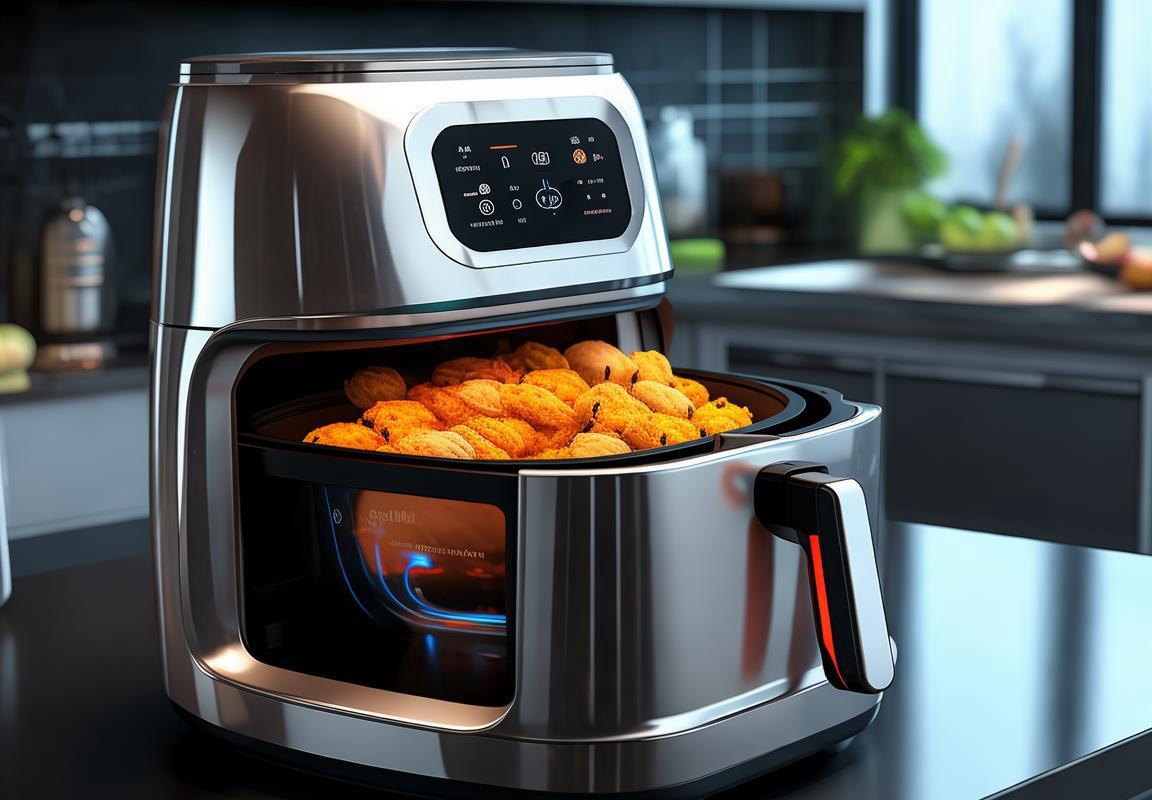
Market Trends and Consumer Preferences in the Air Fryer Sector
The air fryer sector has experienced a remarkable transformation over the years, driven by evolving market trends and shifting consumer preferences. From the initial skepticism about the health benefits to the current surge in popularity, here’s a closer look at the trends and preferences shaping the air fryer market.
The rise of health consciousness has been a pivotal factor in the air fryer’s popularity. Consumers are increasingly aware of the health risks associated with deep-frying and are seeking healthier alternatives. This shift has led to the development of air fryers that offer a healthier cooking option, using minimal oil to achieve crispy results.
Smart technology integration has become a significant trend in the air fryer market. Modern air fryers now come with features like touchscreens, app connectivity, and programmable settings. These advancements not only enhance the user experience but also cater to the growing demand for convenience and customization in kitchen appliances.
The compact and space-saving design of air fryers has also contributed to their appeal. With kitchen spaces becoming more limited, especially in urban settings, consumers are looking for appliances that don’t take up too much counter space. The sleek and portable nature of air fryers has made them a favorite among those with limited kitchen real estate.
The variety of cooking functions available in air fryers has expanded, offering consumers more options than ever before. From air frying to roasting, baking, and even dehydrating, these versatile appliances are becoming a one-stop solution for a wide range of cooking needs. This versatility is appealing to those who want to reduce the number of appliances in their kitchen without sacrificing functionality.
Eco-conscious consumers are driving another trend in the air fryer market. With a focus on reducing energy consumption and minimizing waste, air fryers are seen as a more sustainable choice compared to traditional deep-frying methods. This environmental awareness is influencing purchasing decisions and pushing manufacturers to develop more energy-efficient models.
The influence of social media and influencer marketing cannot be overlooked in the air fryer sector. Before and after photos, cooking tutorials, and product reviews shared online have a significant impact on consumer preferences. The air fryer’s ability to produce delicious, golden-brown food with minimal oil has been a hit on platforms like Instagram and TikTok, further fueling its popularity.
The trend towards healthier eating habits has also led to the development of low-calorie, low-fat air fryer recipes. Consumers are not just interested in the appliance itself but also in the culinary possibilities it offers. This has encouraged manufacturers to provide recipe books and online resources to enhance the user experience and demonstrate the versatility of air fryers.
The air fryer market is also seeing a rise in customization and personalization. With a variety of sizes, colors, and design options, manufacturers are catering to consumers who want to make their kitchen appliances a reflection of their personal style. This has opened up new opportunities for brands to differentiate themselves in a crowded market.
Finally, the rise of subscription services has had an impact on the air fryer sector. Brands are offering monthly subscription boxes that include new recipes, accessories, and even new air fryer models. This subscription model not only provides consumers with a steady stream of new content but also ensures that they always have the latest technology at their fingertips.
As the air fryer sector continues to evolve, it’s clear that market trends and consumer preferences are driving innovation and shaping the future of kitchen appliances. From health and convenience to sustainability and personalization, the air fryer has become more than just a kitchen gadget; it’s a symbol of the changing landscape of culinary technology.
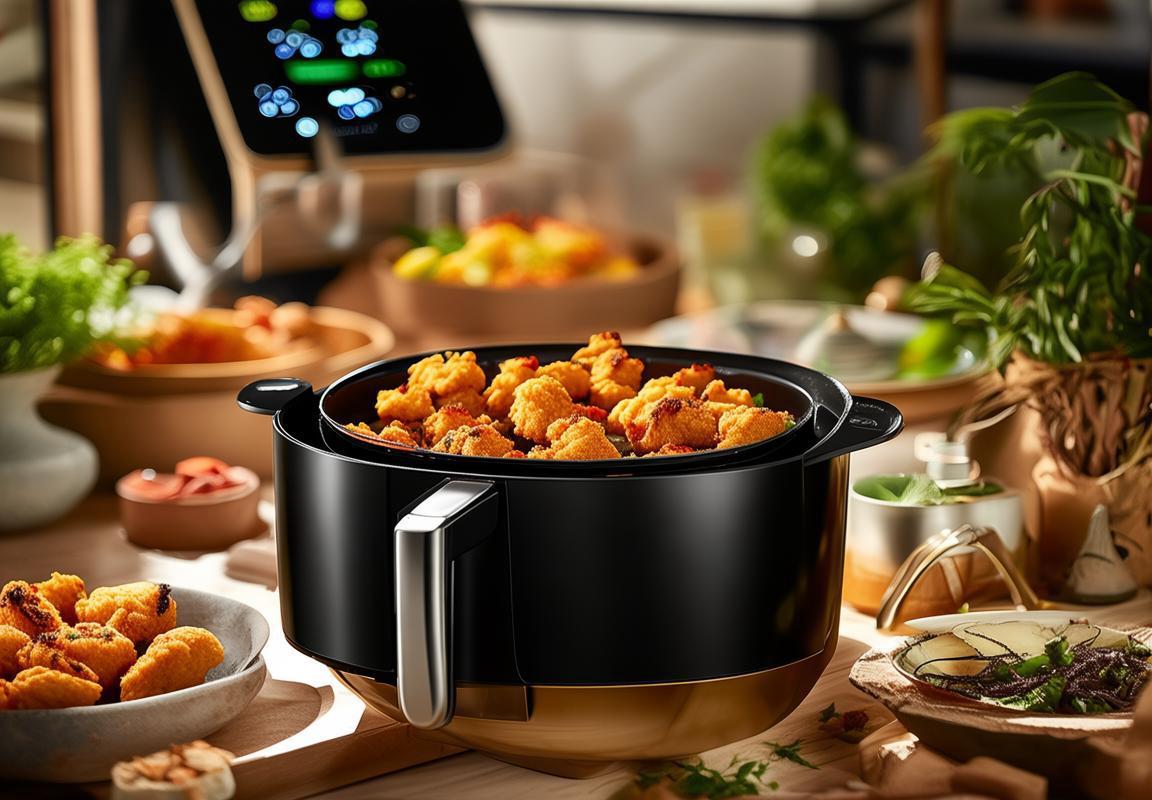
Challenges and Opportunities for Low MOQ Air Fryer Manufacturers
Navigating the competitive landscape of the air fryer market, manufacturers with low minimum order quantities (MOQs) face a unique set of challenges and opportunities. Balancing the need for efficiency and customization, these manufacturers must adapt to shifting consumer demands and technological advancements. Here’s an exploration of the multifaceted realm they operate within.
The demand for innovation is relentless. Consumers are constantly seeking new features that enhance convenience and health benefits. For low MOQ air fryer manufacturers, staying ahead means incorporating cutting-edge technologies such as smart sensors and app connectivity. This push for innovation can be a significant opportunity, as it allows manufacturers to differentiate their products and appeal to tech-savvy consumers.
Customization is key. With low MOQs, manufacturers can cater to a wider range of retailers and distributors, each with their own branding and packaging requirements. This flexibility can lead to increased sales as manufacturers can offer tailored solutions that resonate with specific market segments. However, the challenge lies in maintaining quality control and efficiency while managing diverse orders.
Supply chain management is crucial. The ability to source components quickly and efficiently is vital for low MOQ manufacturers. They must build strong relationships with suppliers to ensure a steady stream of parts without overstocking. This delicate balance requires a keen understanding of market trends and the agility to pivot when necessary.
Quality assurance is non-negotiable. Despite the lower MOQs, the expectation for product quality remains high. Manufacturers must invest in rigorous testing and quality checks to ensure that each air fryer meets or exceeds industry standards. The challenge here is to maintain these high standards while managing smaller batches of products.
Marketing and branding present a unique challenge. With a multitude of air fryer brands on the market, standing out can be difficult. Low MOQ manufacturers need to craft compelling marketing strategies that highlight their unique selling points, such as eco-friendly materials, energy efficiency, or health benefits. The opportunity lies in creating a narrative that resonates with eco-conscious and health-aware consumers.
Regulatory compliance is a constant concern. Different markets have varying regulations regarding product safety and labeling. Low MOQ manufacturers must stay informed and adapt their products to meet these requirements. This can be challenging, especially when dealing with multiple jurisdictions, but it also presents an opportunity to gain a competitive edge by ensuring compliance from the outset.
Customer service is paramount. With low MOQs, manufacturers often deal with a higher volume of orders, which can strain customer service resources. Yet, providing exceptional customer service is crucial for building brand loyalty and repeat business. The challenge is to scale customer service operations efficiently without compromising on the level of support offered.
Global expansion is a double-edged sword. While it opens up new markets and customer bases, it also brings with it the complexities of international shipping, customs, and cultural differences. Low MOQ manufacturers must navigate these challenges while capitalizing on the opportunities presented by global demand.
The rise of e-commerce has reshaped the landscape. Online sales platforms offer low MOQ manufacturers a direct channel to consumers, bypassing traditional retail distribution channels. This direct-to-consumer approach can significantly boost sales and revenue but requires a strong online presence and effective digital marketing strategies.
Lastly, the circular economy is gaining traction. Manufacturers with low MOQs are well-positioned to embrace sustainability by designing products that are easier to recycle or that use recycled materials. This not only aligns with consumer values but can also be a point of differentiation in a crowded market.
In summary, the challenges and opportunities for low MOQ air fryer manufacturers are vast. By focusing on innovation, customization, supply chain efficiency, quality assurance, marketing, regulatory compliance, customer service, global expansion, e-commerce, and sustainability, these manufacturers can navigate the complexities of the market and capitalize on the myriad of possibilities it presents.

Case Studies: Successful Low MOQ Air Fryer Launches
The success of a low minimum order quantity (MOQ) air fryer launch can be attributed to several strategic decisions and market dynamics. Let’s delve into some notable case studies that showcase the triumphs in this sector.
In one instance, a small startup introduced a compact and energy-efficient air fryer with a unique design that appealed to environmentally conscious consumers. By focusing on the sustainability aspect, they were able to tap into a niche market and quickly gain a strong following.
Another example involves a company that partnered with local farmers to source organic ingredients for their air fryer recipes, offering a health-focused product that resonated with health-conscious consumers. This approach not only differentiated their product but also built a loyal customer base that valued transparency and ethical sourcing.
A global brand made waves by offering a line of air fryers with a wide range of smart features, including remote control capabilities and recipe integration. The innovative technology drew tech-savvy consumers who were looking for convenience and ease of use in their kitchen appliances.
A startup succeeded by targeting the value segment with a low-cost air fryer that was still high in quality. They managed to do this by optimizing their supply chain and manufacturing processes, ensuring that they could produce at a competitive price point without compromising on performance.
In another case, a company focused on customization, allowing customers to choose from various sizes and features for their air fryer. This personalized approach satisfied consumers who had specific kitchen space or cooking preferences, leading to a surge in pre-orders and sales.
A well-known appliance brand launched a retro-styled air fryer that paid homage to the vintage appliances of the past. The nostalgic appeal caught the attention of a demographic that appreciated the blend of modern functionality with classic aesthetics.
A startup took advantage of social media marketing to create a buzz around their air fryer, leveraging influencers and viral challenges to increase brand awareness. The innovative marketing strategy led to a rapid increase in online sales and a dedicated fanbase.
In a different scenario, a company partnered with popular cooking shows and chefs to showcase their air fryer’s capabilities. The exposure not only demonstrated the product’s versatility but also helped to establish it as a go-to choice for professional and amateur chefs alike.
A global brand achieved success by offering a range of air fryers that catered to different dietary needs, including gluten-free and keto-friendly options. This approach allowed them to reach a broader audience and gain market share in the health and wellness segment.
A small company focused on community engagement by hosting cooking demonstrations and workshops, encouraging customers to try their air fryer in person. This hands-on experience helped to build trust and credibility, leading to a loyal customer base.
In one final example, a startup capitalized on the trend of home entertaining by creating an air fryer that could also be used as a countertop oven, appealing to consumers looking for a versatile kitchen appliance that could serve multiple purposes.
These case studies highlight the diverse strategies that have proven successful in the low MOQ air fryer market, showcasing how a combination of innovative design, targeted marketing, and customer engagement can lead to a successful product launch.
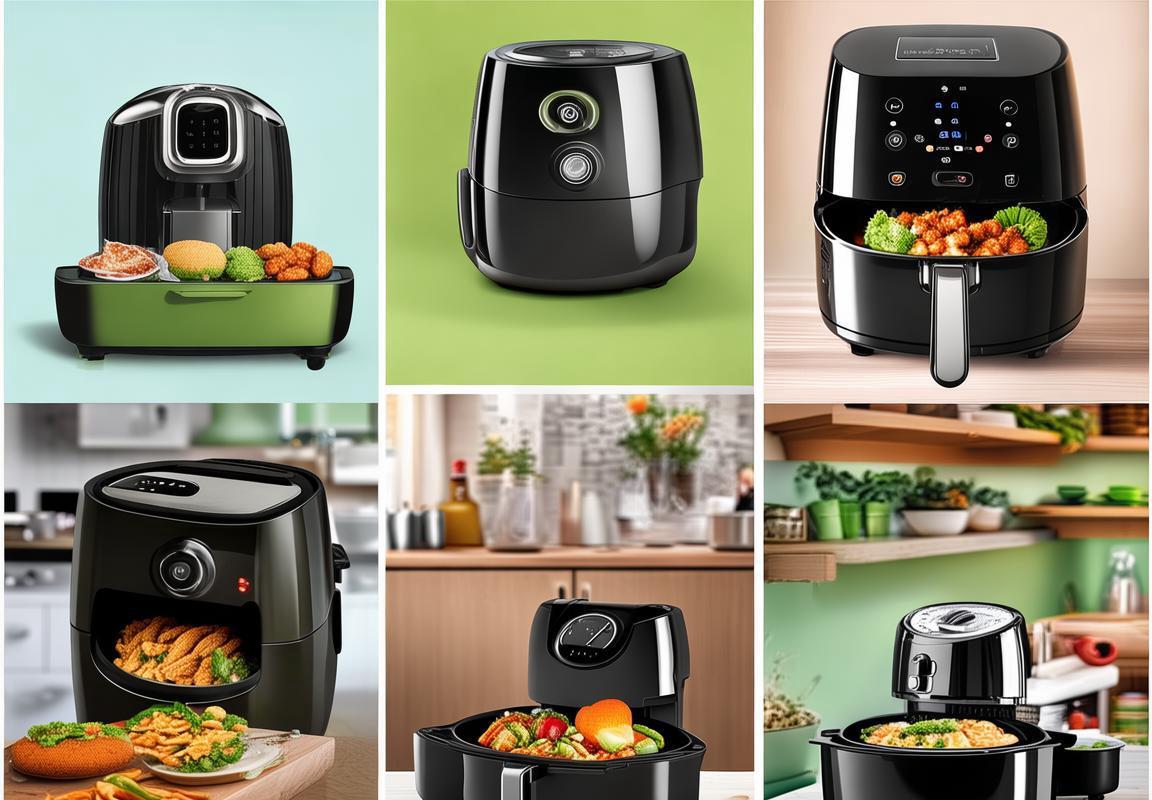
The Future Outlook for Low MOQ Air Fryer Manufacturing
In recent years, the air fryer market has seen a surge in popularity, and this trend is expected to continue as consumer preferences evolve. The future outlook for low minimum order quantity (MOQ) air fryer manufacturing is promising, with several factors shaping its trajectory.
The demand for healthier cooking alternatives has skyrocketed, and air fryers have emerged as a favorite choice among health-conscious consumers. As more people look to reduce their oil consumption and calories while still enjoying fried foods, the market for low MOQ air fryer manufacturing is set to expand.
With the rise of e-commerce and direct-to-consumer sales channels, manufacturers are now able to cater to smaller retailers and independent businesses that were previously underserved by the industry. This shift allows for more diversity in the market, with a wider range of air fryer models and features becoming accessible to a broader audience.
Sustainability is becoming a critical concern for consumers and businesses alike. Low MOQ air fryer manufacturers are responding by focusing on eco-friendly materials and energy-efficient designs. By doing so, they are not only appealing to environmentally conscious consumers but also reducing their own operational costs in the long run.
Advancements in technology continue to drive innovation in the air fryer sector. Smart features such as wireless connectivity, app integration, and customizable settings are becoming more common, and manufacturers that offer these cutting-edge capabilities are likely to capture a larger market share.
Customization is another trend that’s gaining momentum. Consumers are looking for products that fit their specific needs, whether that means a compact size for limited counter space or advanced features for specific dietary preferences. Low MOQ manufacturing allows for the creation of specialized models that cater to niche markets, enhancing brand loyalty and market positioning.
The integration of social media and influencer marketing has changed the way products are launched and sold. Manufacturers with low MOQs can test new designs and branding strategies quickly, leveraging social media platforms to gain traction and build buzz around their products. This agile approach to product launches can significantly reduce the time and risk associated with traditional market entry.
As the world becomes more connected, the potential for international sales grows. Low MOQ air fryer manufacturers can capitalize on this by adapting their products to meet the specific requirements of different markets, from power outlet standards to consumer preferences in different regions.
The global economic climate plays a significant role in shaping market trends. During times of economic uncertainty, consumers often look for affordable yet high-quality products. Low MOQ air fryer manufacturing caters to this need, providing a cost-effective solution without compromising on quality.
The future of low MOQ air fryer manufacturing also hinges on regulatory changes. As health and safety standards evolve, manufacturers will need to stay ahead of these regulations to ensure their products are not only popular but also compliant. This requires a nimble manufacturing process that can adapt to changing requirements swiftly.
Finally, the rise of health-focused lifestyle influencers has had a profound impact on consumer behavior. These influencers often promote products that align with their personal values and the interests of their followers. For low MOQ air fryer manufacturers, partnerships with such influencers can be a game-changer, providing access to a captive audience and fostering brand growth.
In conclusion, the future outlook for low MOQ air fryer manufacturing is bright, driven by a combination of health trends, technological advancements, and changing consumer preferences. Manufacturers that can navigate these complexities and capitalize on emerging opportunities are well-positioned to lead the market and cater to the evolving needs of consumers worldwide.
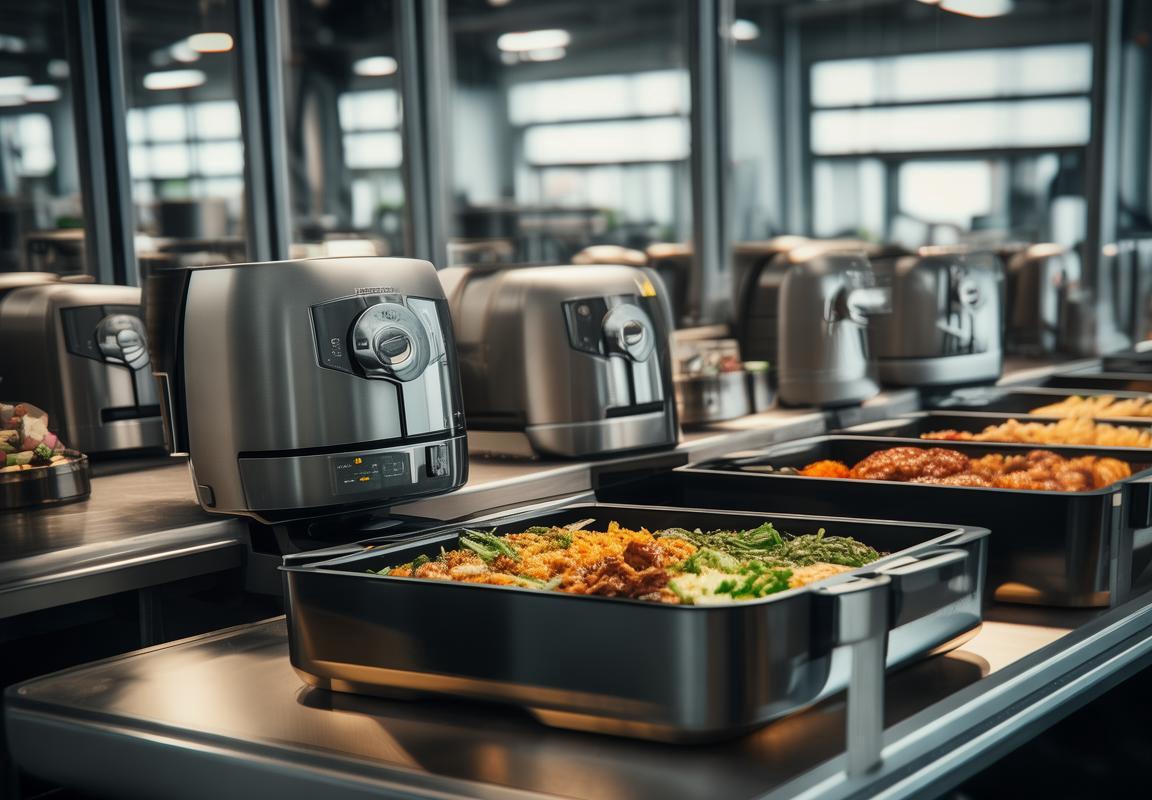
Conclusion: Navigating the Low MOQ Air Fryer Landscape
In the ever-evolving landscape of air fryer manufacturing, navigating the low minimum order quantity (MOQ) market requires a keen understanding of the intricacies and potential pitfalls. As we reflect on the journey thus far, it’s clear that the low MOQ air fryer market presents a unique set of challenges and opportunities.
The demand for air fryers has surged, driven by consumer interest in healthier cooking methods and the convenience they offer. However, the low MOQ approach means that manufacturers must balance this demand with the need for efficient production and cost management. This delicate balance can sometimes lead to inconsistencies in product quality and supply chain disruptions.
One significant challenge for low MOQ air fryer manufacturers is the need for rapid adaptation. The market is highly competitive, with new players entering the scene and established brands constantly updating their product lines. To stay ahead, manufacturers must be agile, quickly responding to changing consumer preferences and technological advancements.
Despite these challenges, there are substantial opportunities within the low MOQ air fryer market. The ability to offer customized solutions to retailers and distributors is a major advantage. This means manufacturers can cater to niche markets and fulfill specific product requirements without the need for large-scale production runs.
Case studies have shown that successful low MOQ air fryer launches often rely on innovative marketing strategies. By leveraging social media and influencer partnerships, manufacturers have been able to create buzz and drive sales. This approach not only helps in reaching a wider audience but also in building a loyal customer base.
Another opportunity lies in the integration of smart technology. As consumers become more tech-savvy, there is a growing demand for air fryers that offer connectivity and smart features. Manufacturers who can incorporate these advancements into their products are likely to capture a larger market share.
Yet, the path to success is not without its hurdles. Ensuring consistent quality control while maintaining a low MOQ is a complex task. Manufacturers must invest in flexible production lines and quality assurance processes that can handle small batches without compromising on standards.
Furthermore, the environmental impact of manufacturing cannot be overlooked. As consumers become more environmentally conscious, there is a growing expectation for sustainable practices. Low MOQ manufacturers must find ways to reduce their carbon footprint while keeping costs down.
Looking ahead, the future of low MOQ air fryer manufacturing appears promising, but it is not without its complexities. The market is expected to see continued growth, especially as health trends and convenience remain at the forefront of consumer preferences.
One trend that is likely to influence the future is the rise of e-commerce. With more consumers turning to online shopping, there is an opportunity for low MOQ air fryer manufacturers to reach a global audience. This shift also means that manufacturers must adapt to the fast-paced nature of online sales, ensuring timely delivery and excellent customer service.
Moreover, the integration of new technologies, such as AI and IoT, could revolutionize the way air fryers are designed and manufactured. By utilizing these technologies, manufacturers can create more intuitive and efficient appliances that cater to the needs of modern consumers.
In conclusion, the low MOQ air fryer landscape is a dynamic and challenging environment. Success in this market requires a combination of innovation, adaptability, and a commitment to quality. As manufacturers continue to navigate this terrain, they must remain vigilant and ready to seize opportunities that arise while addressing the challenges that lie ahead.